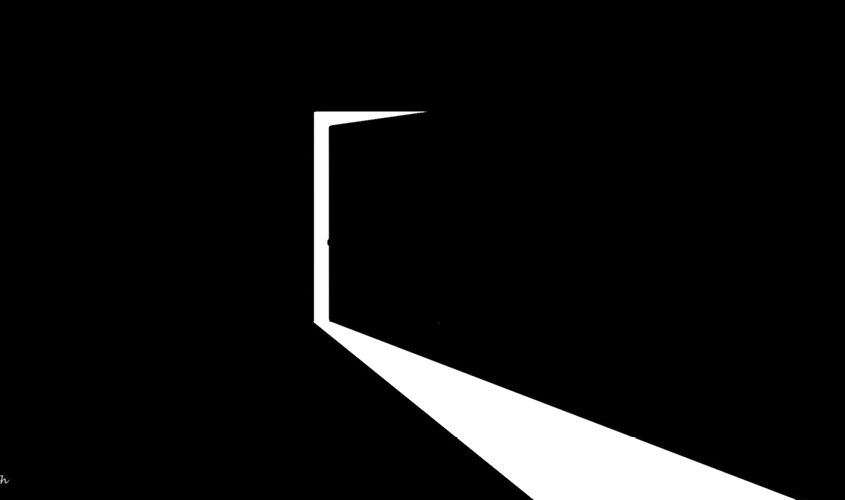Recently, there were exciting reports that a crime team from the Federal Bureau of Investigation (FBI), the United States government’s principal investigative agency which investigates a variety of criminal activity had solved the mystery of a 4,000-year-old decapitated Egyptian mummy. This news drew attention once again to the door to an afterlife. To recap, in 1915, a hidden tomb was discovered by the American Egyptologist George Andrew Reisner, leader of the Harvard University / Boston Museum of Fine Arts expedition, in the Deir el-Bersha necropolis near the Nile valley town of Minya, 225 km south of Cairo. Along with much else, “one of the finest painted coffins ever found in Egypt”, and a decapitated mummified head that had been placed on top of it met his gaze.
Live Science reported that “Deepening the mystery, the head had been altered during the mummification process, with several bones removed from the jaw and cheek in an effort to enable the deceased to eat and drink in the afterlife”. The Museum described the focal point of the painted panel as “an intricately decorated false door through which the Ka could pass between the afterlife and the world of the living. In neat columns of tiny, cursive hieroglyphs are the Coffin Texts, a collection of funerary rituals and spells intended to protect and guide the dead on their way to the afterlife.”
Is there actually a door to the afterlife? Certainly, across cultures and the world, there is a mind boggling variety of gods and deities of death, each with their own specific responsibilities ranging from determining the time of our death, coming to collect us, guiding us through the door to the afterlife or deciding whether we’re fit enough to pass through that all important door and so on. Just a quick glance at Wikipedia’s by no means exhaustive list of deities of the dead is mind blowing, with more than 300 such deities covering both polytheistic religions or mythologies and the theology of monotheistic religion finding mention. The Chinese mythology list alone of powers managing death and the afterlife and their particular roles has more than 120 entries.
In 2010 UK’s Daily Mail reported that “archaeologists in Egypt have uncovered a 3,500-year-old ‘door to the afterlife’ belonging to the tomb of a high-ranking royal advisor. The 175cm red granite false door, the likes of which were found in most ancient Egyptian tombs, was built to take the spirits of the dead to and from the afterworld. The door is covered in religious texts and heiroglyphics and came from the tomb of User, the chief minister of 15th century BC ruler Queen Hatsheput…” Experts believe the recessed niches found in nearly all ancient Egyptian tombs were meant to take the spirits of the dead to and from the afterworld.
Incidentally, in a somewhat tongue in cheek article, Carly Ledbetter wrote in the Huffington Post : “Death can be a scary thing to talk about, but finding the actual door to the underworld might be an even scarier feat! …Not only did the Mayans predict the apocalypse, but they were also able to locate an entrance to the underworld in sacred cenotes in Yucatan, Mexico. Based on etchings of Cum Hau, the Mayan god of death, Mayans once believed the cenotes were ‘portals for ghosts of the dead to pass into the afterlife’… While the Mayans found their afterlife underwater, the Door to Hell is supposedly located in Turkmenistan, in the village of Derweze… Pluto’s Gate, a mythical portal to hell, was recently uncovered in Pamukkale, Turkey. Today, as a World Heritage Site, the Gate is still as deadly as ever even though its entrance is covered up. ..”
The ancient Egyptians were obviously staunch believers in an afterlife. Ancient Egyptians called it the land of the Two Fields. Initially, only pharaohs could board Ra’s magical boat and travel to the land of the Two Fields, but Osiris, the god in charge of opening the door to the afterlife, changed that. However, certain conditions had to be met if you wanted to step onto Ra’s boat. Briefly, you should have done good deeds in your lifetime. Your name should also have been written down somewhere so that you would not just vanish when you died. You had to have a preserved body. Ancient Egyptians believed that everyone had a soul which went by two names—the Ba and the Ka. The Ba returned during the day to watch over the living family, while the Ka flew off to enjoy life in the land of the Two Fields. At night, both the Ba and the Ka flew home to their tomb, to rest and prepare for the next day. That is why desecration or “invasion” of tombs brought bad luck and misery to those who disturbed the resting places of the dead.
In India too most people have a strong belief not only in the existence of a soul and an afterlife but in reincarnation as well. While the Gita and other ancient scriptures contain very profound accounts, discussions
But no matter which country, culture or mythology, there is mention albeit in different ways of a door to an afterlife and the conditions governing entry. However, I find it most intriguing that accounts of the door to an afterlife often describe it as a two way door through which “ spirits could pass between the afterlife and the world of the living”, a door that “takes the spirits of the dead to and from the afterworld”. More on this fascinating two way door between the world of the living, the dead and an afterlife in a later column.

